Matador Network's Blog, page 1204
December 11, 2018
Why you should visit San Andrés

While Jamaican all-inclusives and Bahamian cruise ports see visitor numbers rise year after year, the Colombian islands of San Andrés and Providencia continue to fly under the radar of many tourists. In fact, many people don’t even know they exist — even Colombians. As more and more travelers seek out lesser-known destinations, it’s unlikely to stay that way for long. For now, though, you can take advantage of their wide-open beaches and Rastafarian vibe without the crowds. Here’s everything you need to know about San Andrés and Providencia, and everything to do once you get there.
Two islands far removed
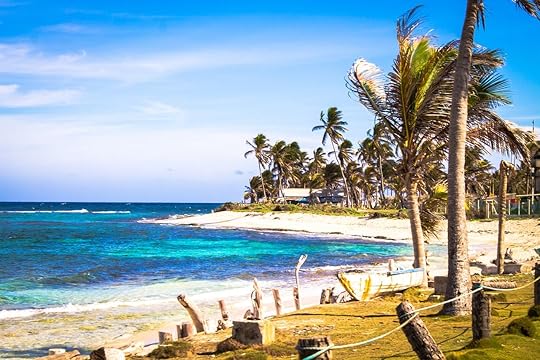
Photo: caorozco/Shutterstock
San Andrés is located 750 kilometers (470 miles) northwest of mainland Colombia and only 150 kilometers (93 miles) off the coast of Nicaragua. The smaller island of Providencia is a 3.5-hour ferry ride to the north, and while the islands have historically been tied to Spain, Great Britain, Africa, and Holland, they were the subject of a long-running battle between Colombia and Nicaragua until the 1900s. The frequent changing of hands has given them an eclectic mix of cultures and traditions, evident in everything from the cuisine to the fact that you’ll hear Spanish, English, and Creole depending on where you are — and in the more traditional Providencia towns, Elizabethan English.
While the tourism industry hasn’t flooded the islands, one organization that has acknowledged their existence is UNESCO, which in 2000 declared the archipelago of San Andrés a World Biosphere Reserve in order to protect the vast coral reef system and marine life. San Andrés and Providencia have largely been kept off the radar due to the past difficulty of getting to the islands. Prior to the opening of an international airport, the only way to reach the islands was from Bogotá.
San Andrés is an island rich with culture.
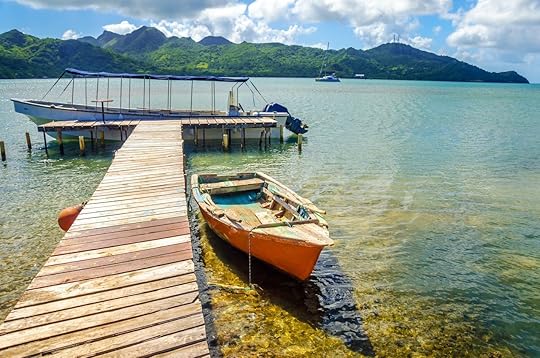
Photo: Jess Kraft/Shutterstock
San Andrés’s heritage and influence are quite muddled, stemming from the English, African, Spanish, and French corsairs with a dose of pirate tossed in. As with mainland Colombia, reggaeton music runs through the islands, though you’ll hear everything from reggae and ragga to calypso, salsa, and vallenato music playing throughout the cafes, clubs, and public squares. Islanders like to dance and know how to party — and decorate — in style. You’ll see buildings hand-painted with bright colors, reflecting the passion and charm you’ll encounter when you get to know the locals.
Adding to the vibrant culture are a number of annual festivals for celebrations. They begin the year with the Crab Festival on January 1 when the island showcases an abundance of crab dishes along with dancing and live music throughout the day-long celebration. One of the major annual festivals is the Green Moon Festival, which takes place in mid-September. This festival is a celebration of the delicious local cuisine and also features lectures on music, documentaries on the island’s culture and history, and, of course, dancing.
The festivals end with the Patron Saint Festival, which takes place in late November and is the island’s tribute to the saint that the population entrusts. In addition to dancing, you can catch live performances, meander through food fairs, and even attend the Coconut Beauty Queen pageant.
Providencia and Santa Catalina are even more remote.
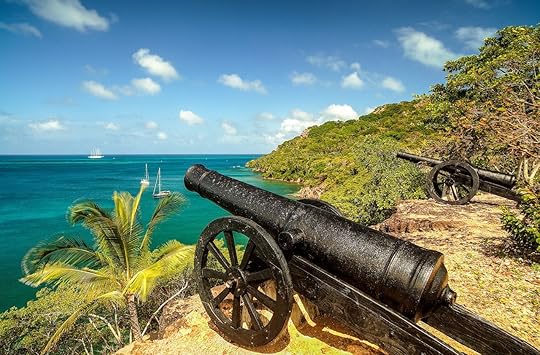
Photo: pipojackman/Shutterstock
The archipelago of San Andrés includes two other islands, Providencia and Santa Catalina. Providencia is the larger of the two islands, and it’s located 90 kilometers (56 miles) north of San Andres, midway between Costa Rica and Jamaica. Santa Catalina is a small satellite island located off the north coast of Providencia and can be reached by the 100-meter (328-foot) footbridge that connects the islands.
Providencia is not as commercialized as San Andrés and has predominantly kept its English influence from the era of colonization. The pirate Henry Morgan used the island as a base to store his treasure, and a local rumor has it that some hidden treasure is still present on the island. To protect his loot, Henry created forts and canons on the island that can still be seen today.
The island can only be reached by ferry or plane from San Andrés, and due to this, the majority of the island’s population is more influenced by Caribbean culture and Rastafarianism, speaking English and San Andres Creole more so than Colombian Spanish.
Providencia is surrounded by coral reefs with Old Providence McBean Lagoon National Park located on the northeast of the island. This protected area of 995 hectares is a popular spot for diving or snorkeling in the reefs and visiting cayes, mangroves, or lagoons. It’s surrounded by luscious tropical rainforest, and you can hike to the island’s highest point via an 800-meter (2,625-foot) eco-path past mangroves and fauna up to El Pico Natural Regional Park. Here, you’ll take in 360-degree views from the top. The island also has an abundance of deserted beaches that make for ideal diving or snorkeling excursions, along with white sandy beaches backed by undeveloped land.
Between April and May, the black land crabs that inhabit the hill on the island descend down to the ocean to breed. Thousands cover the beaches at the same time and lay their eggs in the sand, creating quite a spectacle for onlookers. Santa Catalina is very traditional with very few towns or facilities, but this makes it the perfect place to discover the deserted beaches of Morgan’s Head — a rocky cliff shaped like a human face– and Santa Isabel, connected by a pontoon bridge off the island with no beach or town.
The cuisine is the perfect blend of Caribbean and Colombian.

Photo: Chiyacat/Shutterstock
The cuisine on San Andrés blends traditional Caribbean dishes such as lobster, seafood, crab, snails, and trout with Colombian influences to create unique delicacies like crab empanadas and banana cake. One staple dish you must try is Rondon, a San Andrés fish that was traditionally prepared and eaten only by men but nowadays is enjoyed by everyone. The recipe is made up of fish fillet along with snails, cassava, yam, pork tail, plantain, dumplings, and coconut milk. You’ll notice coconut milk a lot during your visit; it is a key ingredient in local cuisine, as are a collection of vibrant spices like pepper, cinnamon, ginger, and cloves, many of which were inherited from the English.
Coconut rice is a traditional dish, typically served with plantains (in any form), Luca, cassava, and yams. Fish balls are an island staple, as well, made from any type of seafood, typically parrotfish, snapper, or crab. Preparation involves extracting the flesh from the fish and seasoning the balls with tomatoes, garlic, onions, and salt before frying them all together in a pan. For your sweet tooth, breadfruit is very popular whether it is cooked or fried, served as a side or sometimes even unripe. Other typical desserts include coconut balls, banana cakes, and fresh fruit juices.
The islands offer endless outdoor activities.

Photo: By Jess Kraft/Shutterstock
Collectively, San Andrés, Providencia, and Santa Catalina are home to over 40 world-class diving sites with manta rays, coral reefs, and visibility up to 30 meters (98 feet). These sites are protected by the UNESCO Seaflower Biosphere Reserve. Onshore, the archipelago’s pure white-sand beaches line what’s known as the “sea of seven colors,” named as such because of the twinkles of lilacs, greens, and blues that reflect under open sunlight. You can hit the water to kite or windsurf, do a bit of swimming, hop on a jet ski, or even sail. Off the beach, be sure to visit the Coral Palace, the Botanical Gardens, and Spratt Way, a scenic 1,800-meter (1.1-mile) footpath from the airport to the hotel area nearby. 

More like this: 8 of the most underrated UNESCO sites you need to visit
The post Why you should visit San Andrés, Colombia, over any other Caribbean island appeared first on Matador Network.

Top travel for 2019 by Airbnb trends

We might be entrenched in the holiday season right now, but that doesn’t mean we can’t look ahead. For those looking to jet off somewhere new in the New Year but can’t figure out where to go, Airbnb has some ideas for you. Using its 2019 reservation records, Airbnb has compiled a list of the top 19 travel destinations for 2019. According to Airbnb, these places have seen the most dramatic rise in people searching, booking, and putting on their wish lists. Here are the top five of that list that you should definitely book soon — before prices start to rise.
Kaikoura, New Zealand

Photo: Jonathan Hupman/Shutterstock
Although damaged by a massive 7.8-magnitude earthquake in 2016, this small New Zealand town of just 2,150 is still one of the most attractive vacation destinations in the world. Located on the coast of the South Island, Kaikoura is one of the premier places in the world for seal- and whale-watching. Sperm whales are especially prevalent in the nearby waters. With a 295% increase in bookings year-over-year (YoY), and a 210% increase in searches, this is Airbnb’s most popular location for 2019.
Xiamen, China
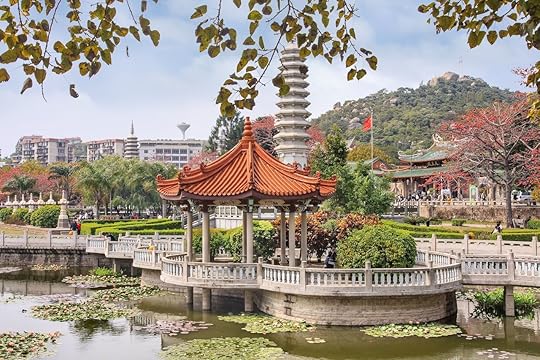
Photo: TonyV3112/Shutterstock
Coming in second on Airbnb’s list, Xiamen has seen a 283% YoY increase in bookings. A port city surrounded by islands, Xiamen is perfect for a romantic getaway. It’s also home to Kulangsu, a pedestrian-only island just off the coast where vehicles are banned. While it might be a great couples destination, that doesn’t mean Xiamen doesn’t come alive at night, as well. There are some great bars and nightclubs, which you can even visit on an organized pub crawl.
Puebla, Mexico
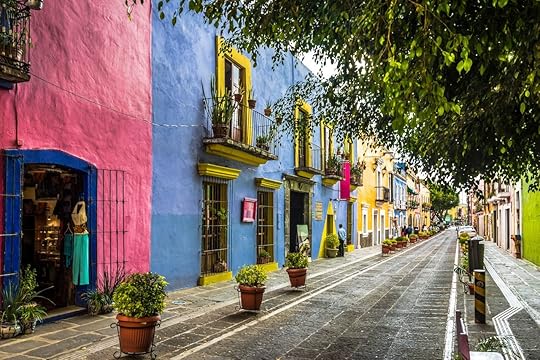
Photo: Diego Grandi/Shutterstock
If you’re not feeling the typical Cancun or Puerto Vallarta spring break, but you’re still craving a Mexican vacation, Puebla might be a perfect choice. Two hours from Mexico City, Puebla is defined by its traditional architecture and array of Mexican culinary options. There are always markets filled with antiques and handicrafts, especially Talavera pottery. The city is experiencing a 240% YoY increase in searches and 206% increase in wishlist mentions.
Normandy, France

Photo: Gaspar Janos/Shutterstock
Everyone knows Normandy is the infamous site of D-Day, but this isn’t just a destination for history buffs. Just a two-hour train ride from Paris, Normandy has a lot more to offer than its beaches. Visitors should check out the area’s lush landscapes, castles, churches, and ancient towns like Rouen. It’s also home to Mont-Saint-Michel, a stunning island commune off the coast. Normandy has seen a YoY increase in bookings of 229% and a 120% increase in searches.
Great Smoky Mountains, United States

Photo: outdoorimages/Shutterstock
More than just a single town, the Great Smoky Mountains are home to America’s most popular national park. It offers 800 miles of trails for hikers to enjoy and is well-known for its accessibility and affordability. It’s the perfect destination for lovers of rugged adventure but also for wildlife enthusiasts. As part of UNESCO’s International Biosphere Reserve, it’s home to the largest black bear population in the eastern United States. It’s also within an easy drive of Pigeon Forge and Dollywood. The Great Smoky Mountains have experienced a 190% YoY increase in searches, according to Airbnb. 
H/T: Thrillist

More like this: Best destinations for new solo travelers in 2019
The post The most popular travel destinations for 2019, according to Airbnb appeared first on Matador Network.

Delta bans emotional support animals

Although airlines have recently seemed to be expanding their tolerance for emotional support animals, Delta is doing quite the opposite. On Monday, the airline announced that it will update its support- and service-animal policy to include a ban on emotional support animals (ESA’s) on flights longer than eight hours. The ban also extends to ESA’s less than four months old, regardless of flight length.
According to Delta, the policy change is a result of an 84% increase of incidents involving emotional support animals since 2016. Common incidents include animals urinating, defecating, and biting passengers or crew members. It’s undeniable that ESA’s have posed an issue for airlines recently, especially as some passengers — who may not actually require support — have allegedly used fraudulent documentation to allow their pets to fly. According to Airlines for America, from 2016 to 2017 the number of ESA’s traveling aboard commercial flights increased by a staggering 74 percent from 481,000 to 751,000.
John Laughter, Delta’s senior vice president for corporate safety, security, and compliance, said in a statement that the new policy supports “Delta’s commitment to safety and also protects the rights of customers with documented needs — such as veterans with disabilities — to travel with trained service and support animals.” Based on this statement, it’s unclear if there will be a blanket ban on ESA’s or if they intend to accommodate people with documented mental health disorders, such as veterans suffering from PTSD who may have emotional support animals.
For Delta tickets purchased prior to December 18, 2018, ESA’s will still be allowed. After the 18th, however, the prohibition will take effect. 
H/T: Business Insider

More like this: Everything you need to know about your rights for flying with pets
The post Delta to ban all emotional support animals on long-haul flights appeared first on Matador Network.

New cave in Canada kept secret
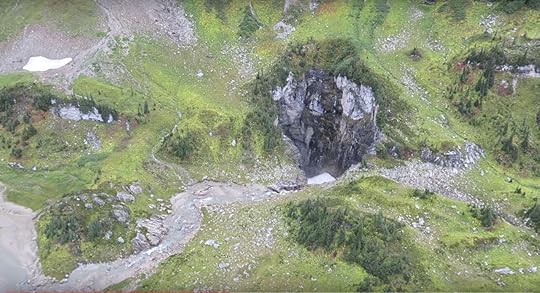
Hearing that an incredible cave was discovered, but that the location is being kept secret, might be the cruelest news a traveler could ever hear. A massive cave was recently discovered in British Columbia — but that’s all we know. To keep it from being overrun by tourists and Instagrammers, the exact location within Wells Gray Provincial Park — about 280 miles north of Vancouver — is being kept secret. “As far as North America goes, this is a honking big cave,” John Pollack, governor of the Royal Canadian Geographic Society, told The New York Times. According to the Times, the cave’s opening is so large it could accommodate the Statue of Liberty.
The cave was discovered this spring by a group of researchers, who noticed a “black hole” in a snowy slope. Upon closer examination, that black hole was actually one of the largest caves in Canada, with an opening 330 feet long, 200 feet across, and 450 feet deep. It’s been temporarily dubbed “Sarlacc’s Pit” on account of its resemblance to the desert pit creature from Star Wars: Return of the Jedi.
To guard “Sarlacc’s Pit” from being overrun by tourists eager for Instagram likes — and from causing damage to the cave — researchers are withholding its location, likely making it even more tantalizing for adventurers. There has actually been a recent campaign against geo-tagging social media photos on the premise that it’s ruining picturesque spots across the world. Such campaigns, along with keeping “Instagrammable” locations secret, could work in the short-term, but may ultimately be like fighting against a powerful tide.
The cave probably won’t remain hidden for long. When it is discovered, and its location made public, you’ll probably know just by checking your Instagram feed. 
H/T: PetaPixel

More like this: 7 epic caves you can hike through in the US
The post The exact location of a new massive cave in Canada is being kept secret from Instagrammers appeared first on Matador Network.

What is fat biking?

Biking has evolved drastically since its early days. When Baron Karl von Drais first mounted wheels to his “running machine” in 1817, he likely didn’t envision people flying down mountains or crossing the whole of France on his invention. Today, the latest cycling iteration is the fat bike. Fat bikes look like someone stole the wheels off their motocross setup and implanted them onto their bicycle. The real story is more practical: making a beloved sport possible no matter what Mother Nature has in mind. Here’s where that rider is headed with that crazy looking bike.
Think pedal-powered off-roading.

Photo: crazymedia/Shutterstock
The evolution of the fat bike can be traced back to the burning desire of die-hard cyclists of all stripes to eliminate disheartening phrases from their vocabulary, including, “I can’t ride today because the weather sucks.”
If you’ve ever tried to ride a road bike after a snowstorm, you can attest to this statement. Fat bikes are the solution since their tires are typically at least 3.8” wide and made with traction more in-line with the snow tires on your Subaru than with normal bike tires. Fat bikes are made to be ridden in snow, downhill, and across varying types of terrain. Experienced riders usually deflate the tires to a pressure point far lower than normal in order to better absorb different levels of snow hardness and other obstacles covering their path. Because the tires are designed for snow, a good rider can pedal across even the fluffiest of powder without sinking.
It’s a damn good workout.

Photo: GROGL/Shutterstock
Fat biking has risen in popularity not just because it’s badass and allows for four-season touring — but also because it’s one hell of a workout. Biking is already great exercise, burning about 650 calories per hour in normal conditions. Fat biking more than doubles that if you’re pushing through powder. Those with sensitive knees rejoice since fat biking is on par with running in its intensity, without the constant joint-pounding that comes with jogging on pavement. You can also move a lot faster than you could with snowshoes or cross-country skis, with the added benefit of actually looking forward to the downhill parts of the trail.
They’re ideal for sand, also.

Photo: mimmikhail/Shutterstock
Let’s face it. As fun as it is to pedal through slightly dampened sand, basket full of rum and fresh fruit, handlebar streamers blowing in the seaside breeze, it’s hard to look like a gnarly shredder on a beach cruiser. You’re not winning any brownie points in the adventure travel community, and if you need to head anywhere with a slope angle greater than 5 degrees or will be riding over jagged, soft, or obtuse surfaces — forget about it. You might as well walk.
Or get yourself a fat bike, because the tires are such that even soft and dry sand won’t slow you down. They’re great for bike touring across variable terrain whether it’s winter or not, which is why you keep seeing them on the beach and the outskirts of town with a duffel strapped to the back. If you’re unsure as to whether or not your current setup can handle everything coming at you on an upcoming trip, odds are a fat bike can put your mind at ease.
“Ok, I’m sold. How do I get started?”

Photo: Grisha Bruev/Shutterstock
Riding a fat bike is most like riding a mountain bike. They are designed to be versatile and durable, able to withstand the scratch-and-tumble that comes with the learning process and rideable in any type of terrain. Most full-service mountain bike shops now sell fat bikes, and many even rent them. Plan to spent upwards of $1,000 to buy one — though cheap knockoffs are available for less.
If you’re new to biking, fat bikes can actually be a great welcome to the sport because they’re extremely well-balanced. You’ll of course want a helmet, along with biking gloves and proper athletic attire to soak up the sweat from your workout. All told, you can be out the door and on the trail on your own brand new setup for under $1,500, a hefty upfront investment but one that can last a lifetime if you maintain your gear. If you want to see how the experts roll or find some people to do a ride with, check out the ever-increasing calendar of competitions, festivals, and events from fatbike.com. 

More like this: The 9 best places to go snowshoeing in North America
The post What the heck is fat biking? appeared first on Matador Network.

Best museums to visit in 2019

If one of your New Year’s resolutions is to exercise your brain more and your texting fingers less, visiting a museum might just be the perfect way to accomplish your mission. Whether it’s art pieces on loan or a new space altogether, these museums make for worthy destinations in the new year and beyond. So, switch off Netflix, leave the ‘gram alone, and go check out these incredible museums in 2019.
1. Royal Alberta Museum in Edmonton, Alberta, Canada

Photo: Royal Alberta Museum/Facebook
Clocking in at 419,000 square feet — and fresh from $375 million worth of upgrades — the relocated Royal Alberta Museum in Edmonton recently reintroduced itself onto the scene as the largest museum in western Canada. The reinvigorated museum is home to the controversial display of the Manitou Stone, a meteorite of sacred significance to Indigenous peoples in Alberta and Saskatchewan, as well as a children’s gallery, halls devoted entirely to Alberta’s natural and human history, and even a wing with live bugs. The temporary Remembering the First World War exhibit will run through 2020.
2. Louvre Abu Dhabi, United Arab Emirates

Photo: Louvre Abu Dhabi/Facebook
Placing a branch of the Louvre in the Middle East is a notable bit of progress in the art sphere. Through the new year, the stunning Louvre Abu Dhabi will host Roads of Arabia: Archaeological Treasures of Saudi Arabia, an exhibition of Saudi art with artifacts from the United Arab Emirates that help tell the story of the Arabian Peninsula. As Saudi Arabia is a relatively difficult country to visit, presenting Saudi art in a museum that’s accessible to more people is a great way for the world to get to know this nation better.
3. Vatican Museum in Rome, Italy

Photo: City Wonders
The Vatican Museum is famously breathtaking, and it’s getting even better in the year to come. In 2019, travelers can see the history of the Sistine Chapel come to life with tour operator City Wonders’ new live theater experience at the Auditorium della Conciliazione, which unravels the secrets of the Sistine Chapel and Michelangelo’s “Last Judgment” through a combination of art, technology, dancing, and music. The production is a work by Marco Balich, creator of 20 Olympic Ceremonies, with music from the legendary Sting. Accompanying perks of booking the theater-and-museum combination with City Wonders include skip-the-line access at the Vatican Museums, St. Peter’s Basilica, and the Sistine Chapel.
4. Museum of Black Civilisations in Dakar, Senegal

Photo: Musée des Civilisations noires
The Museum of Black Civilisations, aka Musée des Civilisations noires (MCN) in French, is a fulfillment of the dream of Senegal’s first president, Leopold Sedar Senghor: a post-colonial Africa complete with a museum in Senegal that tells the story of black people everywhere. It took over five decades, but his vision has finally come to fruition. The mission of the museum is to decolonize African knowledge; a wide range of exhibits and art pieces will showcase contemporary African art, tell the story of the trade of human beings, describe the stages of enslavement from Africa to the plantation, and celebrate women of African descent. The museum will open on December 12, 2018.
5. Toi Art at Te Papa Museum in Wellington, New Zealand

Photo: Te Papa/Facebook
New Zealand’s new national art gallery, Toi Art at Te Papa Museum, is a major development for the country; current exhibitions showcase the history and diverse origins of New Zealand’s multi-cultural art heritage. The Terracotta Warriors: Guardians of Immortality exhibit allows you to mingle with China’s ancient imperial icons in the form of terracotta warriors. You can also take a behind the scenes tour for a chance to view rare artifacts with a museum curator as your guide. And if you’re up for some adventure, try the Earthquake House simulation, which aims to give visitors insight into the aftershocks of the 1987 Edgecumbe Earthquake.
6. The National Museum in Prague, Czech Republic
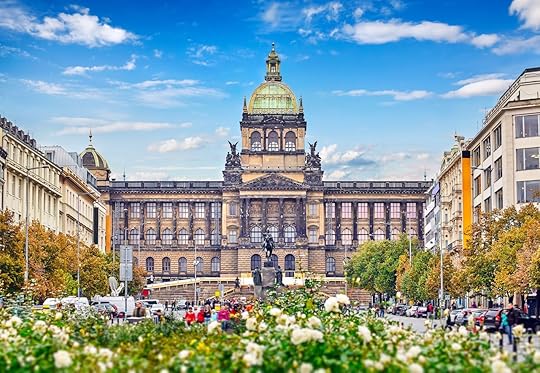
Photo: Yasonya/Shutterstock
Prague’s National Museum was recently unveiled after being closed for refurbishments since 2011. “Most people had no idea it was that light color under all the years of dirt and pollution!” remarked Charles Neville of JayWay Travel, a US-based custom tour operator specializing in destinations throughout Central and Eastern Europe. “The re-opening took place to coincide with the 100-year anniversary of the establishment of the Czechoslovak Republic, with a fantastic video-mapping projection telling the story of the last 100 years.” From now through June 2019, the museum’s Czech-Slovak/Slovak-Czech Exhibition delves into the coexistence of the Czechs and the Slovaks.
7. The Steinhardt Museum of Natural History in Tel Aviv, Israel

Photo: Steinhardt Museum of Natural History
The Steinhardt Museum of Natural History just opened in July 2018 and will welcome visitors to browse its exhibit on human evolution in 2019. What Makes Us Human? explores the origins of homo sapiens and their anatomical and physiological evolution. This exhibit provides travelers with a unique chance to consider how the world and its humans may have evolved over the centuries, all while standing in the heart of the Holy Land. 

More like this: The 10 best pop culture exhibitions in the world
The post The 7 most incredible museums to visit in 2019 appeared first on Matador Network.

Alaskan northern lights train trip
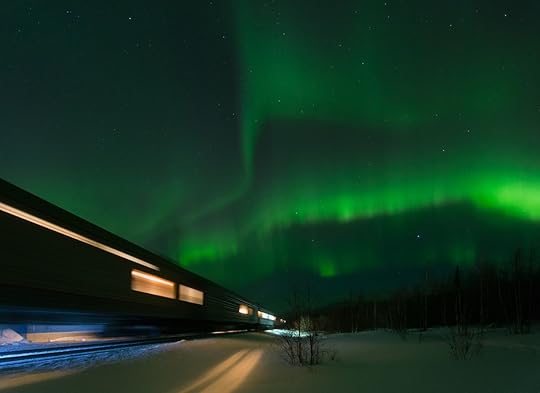
This is as close to the real Polar Express as it gets. Alaska Railroad is offering guests the chance to take an epic train journey through the Alaskan wilderness this winter. Fittingly called the Aurora Train because the aurora borealis — or northern lights — will illuminate your trip, the train will take you through the ideal, snow-covered winter landscape. The eight-day journey begins in Anchorage, where passengers are encouraged to explore the city, then continues north through Talkeetna, finally ending in Fairbanks — one of the best places in the world from which to view the northern lights.
It’s not just a train ride, either. Passengers will be able to partake in a number of excursions, like exploring Denali, taking a dip in hot springs, and dog sledding through the snow with a team of Iditarod champions.
The Anchorage-Fairbanks route is called the Aurora Package and starts at $1,459 per person. The Borealis Package, the reverse journey from Fairbanks to Anchorage, starts at $1,639 per person. The routes are the same except the Borealis route also allows passengers to stay overnight in a clear geodesic dome in the boreal forest (probably explaining the price difference).
The Aurora Train’s first departure is on Christmas Day while the Borealis Train’s first journey is on December 22. Regardless of which direction you’re heading, the trip is available for booking through March 2019.
For train travel without the frills, you can simply book the Aurora Winter Train. Passing through Wasilla, Talkeetna, and plenty of snow-covered wilderness, you’ll still get an epic Alaskan winter experience at a more affordable $200 per person. This train leaves only on weekends from mid-September to mid-May and weekdays from December to March. 
H/T: Travel & Leisure

More like this: 8 superpowers you have if you’re from Alaska
The post This Alaskan northern lights train journey is the real-life Polar Express appeared first on Matador Network.

Places saved by conservation efforts
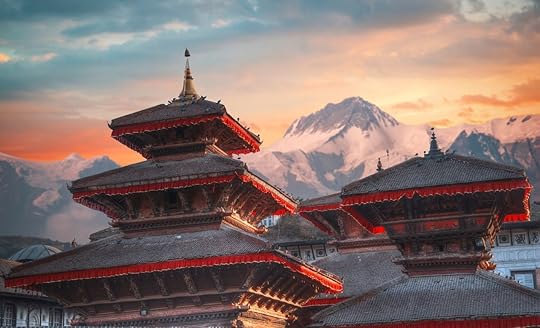
It’s easy to get down about endangered animals and at-risk heritage sites, but it’s also important to remember the efforts being made around the world to conserve our natural and cultural wonders, especially when things seem bleak. From successful rewilding in the wetlands of South America to restoration wins following natural disasters in Asia, these seven conservation efforts open up a world of new travel possibilities. But, before you start planning your next year’s worth of vacations, consider the role that overtourism plays in degrading historic sights and fragile ecosystems, and remember that, as travelers, we must always be aware of our impact. In the spirit of conservation, visit responsibly.
1. Mariposa Grove, Yosemite

Photo: Galyna Andrushko/Shutterstock
Half Dome and El Capitan aren’t the only things that tower overhead in Yosemite. Giant sequoias also keep watch over the park from their impressive vantage points. Mariposa Grove is the largest of three sequoia groves in Yosemite and a favorite attraction among visitors. But, all that foot traffic and nearby development has taken its toll on the grove’s wetland habitat, jeopardizing the ancient trees.
In 2014, a $40 million restoration project, the largest in the park’s history, broke ground to conserve the sequoias and create a more sustainable visitor experience. Thanks to the National Park Service and donations by the Yosemite Conservancy, Mariposa Grove reopened to the public in June, better prepared than ever to host awestruck onlookers.
2. Iberá Wetlands, Argentina

Photo: Matyas Rehak/Shutterstock
The second-largest wetland system in the world after Brazil’s Pantanal, the Iberá Wetlands are a success story in the world of conservation. Locally-extinct species like the giant anteater and green-winged macaw have returned to the area, owing to successful rewilding efforts by the Conservation Land Trust, a Tompkins Conservation project. Moreover, much of the wetlands is protected by the Iberá Provincial Reserve and recently established Iberá National Park, which together span more than a million acres.
Not just an ecological treasure trove, the Iberá Wetlands is also an emerging tourist destination in northeast Argentina that has been compared to Botswana’s Okavango Delta. Visitors can say hello to howler monkeys, alligators, capybara, and more by kayak, boat, horseback, or on foot led by tour guides. It’s worth it so spend a few days in the area, and you’ll find accommodations in the town of Carlos Pellegrini on the outskirts of Iberá National Park.
3. Boracay, Philippines
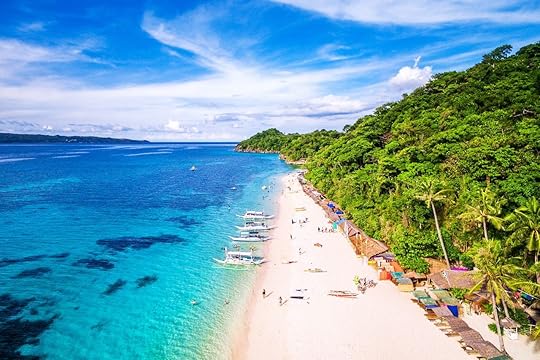
Photo: R.M. Nunes/Shutterstock
For years, Boracay travel meant wild beach parties that would make the average college senior blush. Things got so raucous on the Philippine island that the government closed it to tourists earlier this year for rehabilitation. After six months of cleanup efforts, Boracay is back to its sparkling white-sand shores and crystal-clear waters — and open for business. Sustainable, of course. Environmental laws are being strictly enforced to lessen the damage by local establishments, and visitors are expected to do their part, too. There are new bans on drinking, barbecuing, littering, gambling, pets, single-use plastics, and even unapproved sandcastles at the beach, which can be met with serious penalties if broken.
4. Kathmandu Valley, Nepal

Photo: Skreidzeleu/Shutterstock
Seven UNESCO sites and more than 100 historic monuments are spread across Kathmandu Valley. Much of the area — including landmarks like the Patan, Bhaktapur, and Durbar squares — was decimated by the 2015 earthquake in Nepal, and conservation efforts have been underway since. According to a status report by UNESCO from February 2017, “there would be no negative impact on attributes, authenticity, integrity, and management of the property” or its overall Outstanding Universal Value by the end of the restoration process.
Although the Nepalese government reopened Kathmandu Valley’s historic sites shortly after the earthquake in an effort to draw tourism back to the area, prompting backlash by UNESCO among others, the valley has only recently started looking like its old self again. There’s still a lot left to be done, but considerable progress has been made, meaning Kathmandu Valley is back on the to-travel list.
5. Pompeii, Italy

Photo: S-F/Shutterstock
The once great city of Pompeii has been in ruins since Mount Vesuvius erupted in 79 AD, destroying the ancient community. What remains of the city was inscribed as a UNESCO World Heritage site in 1997 though it has long been a tourist magnet. Countless visitors have further worn the archaeological site down over time, raising concerns over how the Italian government is handling the historic property. Fortunately, new conservation measures have been taken since 2012 as part of the Great Pompeii Project. The EU even contributed $105 million to the restoration efforts the following year.
Since the project’s inauguration, at least six major dwellings have been artfully restored and can now be toured, including an ancient laundromat and thermal bathhouse. Detailed mosaic works and even ancient graffiti have also been preserved, all of which led to a spike in tourism after the unveiling. Exciting as the restoration is, Pompeii is under a pretty serious threat of overtourism, so visitors should be mindful.
6. Bagan, Myanmar
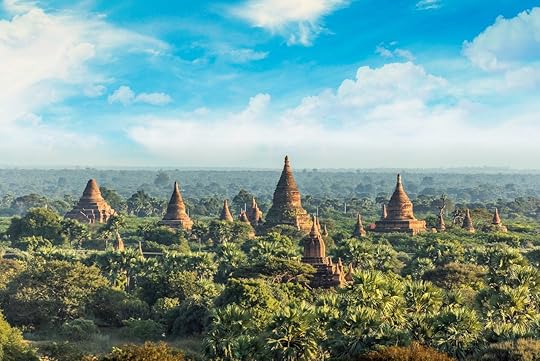
Photo: pozstos/Shutterstock
Much like travel to Myanmar itself, there has been some controversy surrounding conservation efforts in Bagan, an ancient city filled with thousands of Buddhist monuments. Hundreds of temples were damaged during a 6.8-magnitude earthquake in 2016, mirroring a similar disaster years before. Restoration attempts by the Burmese government following the 1975 earthquake were criticized for being shoddy and detrimental to the site’s cultural heritage, which has resulted in a more thoughtful and successful restoration today. Bagan is still not in pre-earthquake shape, but things are looking up for the former kingdom — and travelers, too.
7. Sanro-Den Hall, Ōzu City, Japan
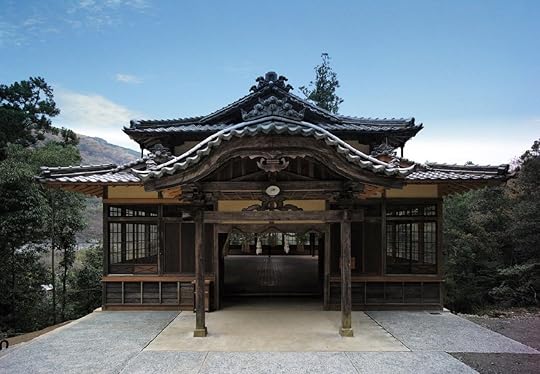
Photo: World Monuments Fund
This prayer hall at the Sukunahikona Shrine on Shikoku Island is hardly the grandest religious site in Japan, but its restoration story is a testament to the power of community-driven conservation. After the hall was placed on the World Monuments Watch in 2014, the World Monuments Fund developed a restoration project that was greatly aided by local volunteers.
Sanro-Den Hall earned the Award of Excellence from the UNESCO Asia-Pacific Awards for Cultural Heritage Preservation in 2016, recognizing the community for its help in restoring the hall down to its last roof tile. Also improved were the facilities and visitor trails, so you can see for yourself what a little elbow grease and some dedication can do. 

More like this: These are the 25 cultural heritage sites that are most at risk
The post 7 places you can only visit because of conservation efforts appeared first on Matador Network.

Taking CBD before flying

Flying during the holidays is a nightmare. You don’t need anyone else to tell you that, what with all the airline studies that come out every year about just how bad it’s going to be getting in and out of the airport this time of year. But other than expecting a crowd, it’s hard to know what to actually do about handling holiday flight stress other than some measly “hacks” like “check-in online!”
Which brings us to the “it” cure-all of the moment: cannabidiol, or CBD. CBD is a compound found in cannabis that doesn’t get you high. It’s in a legal grey area because it can be extracted from hemp, which has 0.03 percent or less THC. So while it doesn’t send you to cloud nine, it’s purported to be everything from a stress reliever to a miracle drug that can lessen muscle pains. More studies need to be done to nail down exactly how it affects our bodies, but that hasn’t stopped people putting it in cocktails, coffee, tea, and pretty much everything else humans ingest. But does it work for flight-related stress?
“A CBD tincture or CBD edible is a great way to take the edge off,” Curt Van Inwegen, the CEO of CBD company Life Elements, told Matador Network. “I don’t take anything with THC because I find that CBD has a way of calming my nerves and relaxing me so I can deal with delays, stress, crowds, and anything else that comes up.”
Those nerves can be a big problem. A study in CBD publication Remedy Review found that nearly 58 percent of women and 47 percent of men are anxious about flying. Around 33 percent of respondents in the study said turbulence was the most anxiety-inducing issue, followed by delays (25 percent) and TSA lines (18 percent).
However, despite having both the problem of travel stress and a trendy stress-relieving solution in CBD, people rarely combine the two. Of those included in Remedy Review’s study, only 4 percent (5 percent of women and 2.5 percent of men) claimed to have used CBD to ease travel anxiety.
For the curious, here are the pros and cons of taking CBD before flying.

Photo: Infinity Time/Shutterstock
Pro: It may lessen anxiety and make you feel more calm.
“The way I describe CBD’s effect is that there is no visceral feeling like a buzz or a high or anything,” Van Inwegen said. “You just realize that you’re more patient and can better focus on solving a problem like rerouting a flight or finding an emergency ‘I gotta pee NOW’ stop for someone in the car.”
In a preliminary study, the National Center for Biotechnology Information (NCBI) found that CBD is an effective way to reduce stress. The authors of the study write that “overall, current evidence indicated CBD has considerable potential as a treatment for multiple anxiety disorders,” while also noting further studies need to be done.
Con: The rules around CBD are still murky.
Just because CBD is easy to find doesn’t mean it’s entirely legal. In September of 2018, the Drug Enforcement Agency (DEA) changed its stance to say that CBD products regulated by the Food and Drug Administration (FDA) are allowed. Everything else containing CBD is still a Schedule I drug alongside marijuana and heroin. That said, a DEA officer told Men’s Health that people are unlikely to be prosecuted for possessing or buying CBD products.
The TSA, like always, is more of a stickler. TSA guidelines state, “Possession of marijuana and cannabis-infused products, such as cannabidiol (CBD) oil, is illegal under federal law. TSA officers are required to report any suspected violations of law, including possession of marijuana and cannabis-infused products.”
Things get even trickier when you add in the varying state laws, especially states that allow marijuana. That said, it’s not like the TSA is exactly hyper-efficient. The agency missed 70 percent of fake weapons when checkpoints were tested in 2017.
“As long as you abide by the two-ounce rule, TSA is not going to hassle you,” Van Inwegen said. “We know from personal experience, feedback from our customers who travel, and frank discussions with people who know the TSA protocols that they are not looking for CBD edibles, tinctures, or anything that is not a bag of weed. If you are super nervous, pull the labels off. As with anything, you should take ownership and bone up on the rules and regulations of the places you are visiting.”
Pro: There are easy pre-flight CBD workarounds.

Photo: Buddha Teas/Shutterstock
Thanks to CBD’s versatile nature, you don’t have to waltz into a meeting with your friendly TSA agent carrying a liquid tincture of CBD. You can take CBD beforehand or drink it in tea. Buddha Teas, a company that sells tea bags infused with five milligrams of water-soluble CBD, makes it easy to take a completely normal looking tea bag with you on your travels.
“I drink CBD tea about 15 minutes before boarding the plane, so whilst everyone is packing in their things before takeoff, the tea has a chance to do its thing,” John Boyd, CEO and co-founder of Buddha Teas, told Matador Network. “I feel noticeably calmer by the time the plane actually takes off.”
Con: It’s not advised to try CBD for the first time right before a flight.
Think of trying CBD for the first time like preparing for an athletic competition, Van Inwegen said. “One important rule is to never experiment on race day, and I would suggest the same strategy for trying CBD.”
Try it a couple days beforehand to get a handle on how much your body reacts and how long it takes. Even with a low dose or subtle CBD product like tea, it’s good to know what you’re going to be feeling before you’re miles high with nowhere to go but the middle seat. 

More like this: Practical tips for getting to sleep when you travel (from experienced travelers)
The post The pros and cons of taking CBD before flying appeared first on Matador Network.

December 10, 2018
Top reasons to visit Sri Lanka
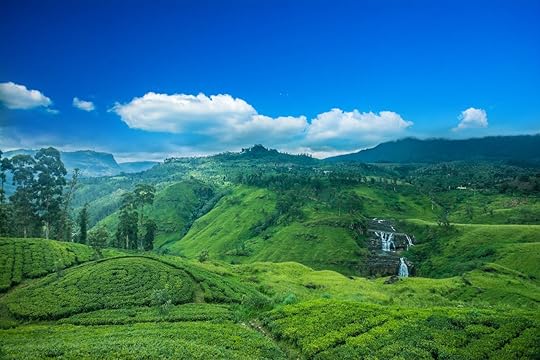
With a landmass only a little bigger than the state of West Virginia, Sri Lanka is a tiny island with a big reputation. The allure of Sri Lanka’s ambrosial spices and dazzling natural beauty has captivated an international melange of visitors for over two thousand years. Its otherworldly landscape has been globally popularized and subsequently eulogized in both ancient and modern literature by Indian settlers, Arab traders, European Imperialists, and intrepid explorers such as Marco Polo.
Sri Lanka’s reputation, however, took a nosedive when it spiraled into a state of civil war in 1983, a conflict that lasted nearly 30 years and brought tourism to a standstill. 2019 marks a decade since the end of the war, and although Sri Lanka is still playing catch-up with post-war development, it is more than ready for travelers. Tourists often refer to this island as “India light,” but while it shares some cultural similarities with its larger neighbor, Sri Lanka has its own unique character and is able to deliver the kind of intoxicating adventure that has earned it numerous accolades. Here’s why Sri Lanka should be firmly on your bucket list.
1. Walk in the footsteps of ancient kings at the Cultural Triangle.
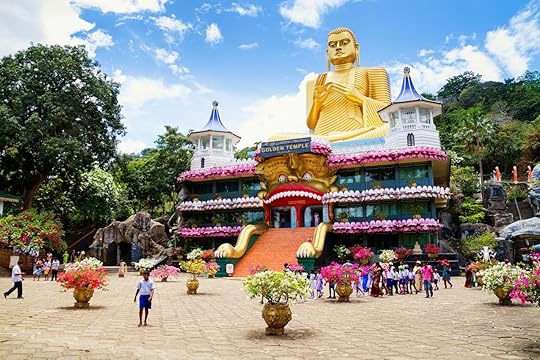
Photo: Milosz Maslanka/Shutterstock
Rising up out of the arid plains of Sri Lanka’s north central province like something from an Indiana Jones movie are the ancient cities that form Sri Lanka’s Cultural Triangle. Here, in between elephant corridors and sun-bleached hinterlands, are 2,000-year-old ruins that reflect the magnificence and grandeur of Sri Lanka’s earliest civilizations.
Aside from the impressive ancient architecture, one of the most fascinating features of this area is the tanks, elaborate man-made waterways now riddled with crocodiles that were once used to bring fresh water to the ancient Kingdoms. These days the tanks quench the thirst of an abundant range of aquatic birds and other wildlife, making the Cultural Triangle one of the most biodiverse and fertile areas on the island. Exploring this area could include anything from cycling through fifth-century temple complexes to climbing to the top of a giant set of lions paws that guard a palace carved into a rock to unraveling the stories of frescoes painted into rock caves. You can even take a hot air balloon or seaplane over the Cultural Triangle to get an aerial perspective of the UNESCO palaces that were once built up into the sky as if reaching towards the heavens.
2. Take a ride on the tea train.

Photo: Melinda Nagy/Shutterstock
One of Sri Lanka’s most Instagramable journeys, the train ride between Kandy and Ella has been a firm favorite for visitors in the last few years. Jump on the train at Kandy and watch as palm trees and tropical foliage give way to misty mountains topped with tea plantations. Sri Lanka’s locomotives haven’t changed much since their introduction in the 19th century, so you’ll get a fairly accurate representation of what the early years of British colonization might have been like for the tea planters who made their fortunes out here.
The long journey is broken up with entertainment from the occasional knife-eater or snake-tamer. Snacks of fresh vadai and spiced fruit are sold by wandering train merchants. Booking a seat is essential unless you want to stand for six hours straight. If you do find yourself standing, then hanging half out of the door is the best compromise to beat the heat and appreciate the scenery without a seat.
3. Head out to the deep to spot blue whales and dolphins.
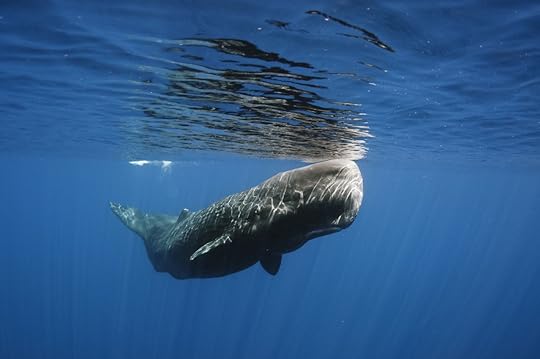
Photo: Shane Gross/Shutterstock
Sri Lanka’s continental shelf sits mere kilometers away from the shore at three points on the island: Mirissa in the South, Kalpitiya in the West, and Trincomalee in the North East. For those of us without a degree in Oceanology, what that means is that the point at which the ocean floor drops off into the super-deep ocean (1,000 kilometers or more) is unusually close to the land. The benefit of this is that some of the creatures from the ocean’s depths can be found quite close to shore.
Sri Lanka is increasingly well known for its blue whales, and there are many whale species in the area such as Bryde’s whale, sperm whale, and even orca. During the peak season (winter-spring in Mirissa and summer in Trincomalee) there’s around a 90 percent chance that you’ll experience a whale sighting. In addition to this, you may catch appearances from dolphins and bobbing marine turtles, though in recent years these marine mammals have been the victim of increasing levels of plastic pollution. Plastic straws, especially, tend to end up in the noses of sea turtles and plastic bags in the stomachs of whales — so always be a responsible, eco-conscious traveler.
4. Tap into Sri Lanka’s spirituality.
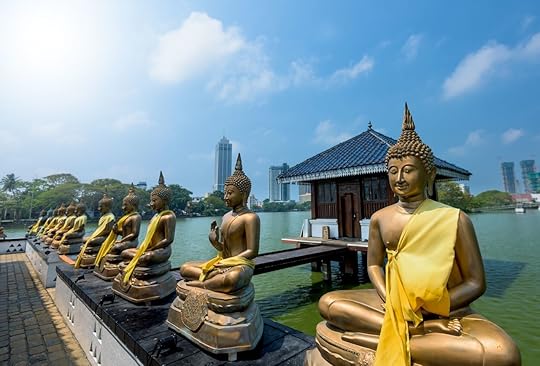
Photo: TRphotos/Shutterstock
Sri Lanka’s links to meditation, ancient holistic healing practices, and yoga go back thousands of years to the ancient civilizations of Buddhist and Hindu kings who settled here around 300 BC. There are numerous opportunities to tap into the spirituality of the island, whether it’s by joining a 10-day silent Vipassana course, studying meditation at a Buddhist Monastery, or visiting one of the yoga studios that have been popping up all over Sri Lanka’s south coast. The country’s two main religions, Buddhism and Hinduism, have uniquely fascinating spiritual practices, and it is worth visiting both Hindu Kovils and Buddhist temples to get a broader understanding of the religious culture on the island.
5. Hike the tea trails.

Photo: your story by Mikhailova/Shutterstock
The maze of tiny dirt footpaths that weave through the tea fields of Sri Lanka’s central highlands could, in theory, allow you to walk right across the region without ever having to use the main road. Plans are underway on the island to create an official walking trail between key destinations in the tea country, but until that happens, the easiest and most accessible walks are within popular destinations in the region such as Ella, Hatton, Haputale and Nuwara Eliya. Although many travelers have noted this one of the more visually inspiring sights in Sri Lanka, it’s important to understand that traditional tea pluckers working on the tea plantations represent the most marginalized and underpaid communities on the island. Their unsung story is woven into the fabric of Sri Lanka’s colonial history, a sad and dark tale of slavery and oppression.
6. Surf the swell.
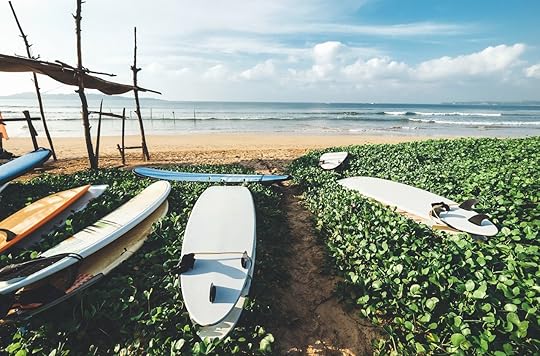
Photo: Soloviova Liudmyla/Shutterstock
Sri Lanka is blessed with the kind of swell that even the 30-year war couldn’t deter surfers from coming for. Back in the days of the Tamil Tigers, the surf town of Arugam Bay — right on the fringes of the war zone — was home to one of the most daring surfer communities on the island. These days, the threat is less imminent, and therefore it’s unlikely that you’ll get a main surf point to yourself, but an excellent surfing infrastructure has been developed to meet the high demand. Surf camps and surfer cafes line the main streets of Weligama, Hikkaduwa, Ahangama, and Arugam Bay, four of the most popular surf points on the island. It’s easy to rent boards, cheap to get lessons from a surf instructor, and the excellent climate and warm ocean make for a perfect day spent on the water — just don’t forget your zinc sunscreen.
7. Snorkel with sharks.

Photo: Khoroshunova Olga/Shutterstock
Pigeon Island, just a short boat ride away from the town of Trincomalee on the northeast coast, is one of Sri Lanka’s best snorkeling and diving locations. One of Sri Lanka’s two marine national parks, Pigeon Island is home to coral reefs abundant with marine life and also boasts a healthy population of blacktip reef sharks. These non-aggressive sharks are a common sighting on the island, and the best way to see them is wade out into the shallows armed with nothing but a snorkel, mask, and flippers as they tend to be scared off by the bubbles of scuba divers.
Reef sharks can grow up to around 1.6 meters (roughly five feet) in length, so you can expect them to be roughly the same size as you, but their small mouths and moderate appetite makes them harmless to humans. If all of that sounds a bit much, there are plenty of places to snorkel in Sri Lanka with no sharks at all — and plenty of other interesting marine life to look at, including turtles, moray eels, lionfish, parrot fish, and colorful coral.
8. Track elephants and leopards in Sri Lanka’s national parks.
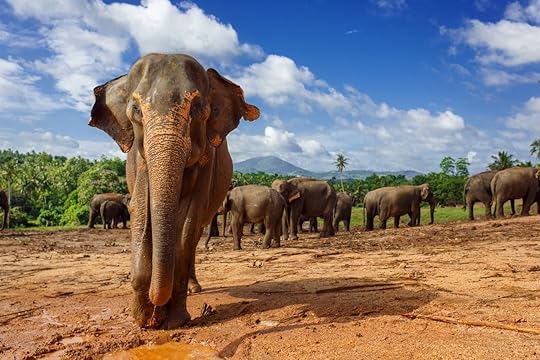
Photo: DarAnna/Shutterstock
There are numerous opportunities to see elephants in Sri Lanka. You’ll find them in the back of temples, dressed up in processions, front lining at religious festivals, being walked along the streets, and hired out for rides in tourist-trap elephant “orphanages.” As a responsible traveler, however, the best practice is to see them in the wild. Minneriya and Uda Walawe national parks offer almost guaranteed sightings of large herds of elephants enjoying themselves in their natural habitat.
Leopards, on the other hand, are much more elusive. You’re unlikely to see them anywhere but Sri Lanka’s two biggest national parks, Yala and Wilpattu. But no matter how hard to find they are, you’re more likely to see them here than in any other part of the world. Sri Lanka boasts the highest density of leopards on the planet, but these beautiful endangered animals are on the brink of extinction. Therefore, to go leopard spotting, you’ll want to get yourself equipped with a good guide who knows how to track leopards in the most sustainable way possible. Poor safari practices have lead to accidental leopard hit-and-run killings in recent years, so if you catch your safari jeep driver speeding in the national parks, be sure to speak out. If it’s within your budget to camp overnight with one of the tour providers set up on the park buffer zones, you’ll have the best chance of seeing leopards and get an amazing insight into their world.
9. Enter a colonial time capsule.
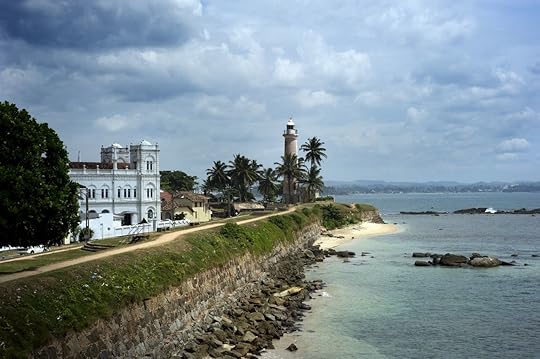
Photo: joyfull/Shutterstock
Colonial tourism is not without controversy, but whether or not you agree with it on a moral level, Sri Lanka offers plenty of opportunities to get a hint of what the “days of the Raj” might have felt like. Renovated tea planter’s bungalows and even traditional British stiff-upper-lip service in certain older establishments and hotels offer well-preserved relics of imperialism. Probably one of the best-kept artifacts of the colonial era is the UNESCO Galle Dutch Fort, which is currently inhabited by a community of predominantly Muslim descendants of Arab traders who keep the Fort tidy, quiet, and reverent.
Within the old stone walls, you’ll find a maze of winding cobbled streets, 16th-century churches draped in bougainvillea, and leafy restaurant courtyards where some of the best food on the island is served. The colonial landmarks within the Fort include a clock tower dating back to 1883, a belfry built in 1707, and a British lighthouse constructed in 1939. The ramparts — which withstood not only a few hundred years of colonial occupation but also the 2004 tsunami — are lined with bastions that have uniquely colonial names, such as Zwart Bastion and Point Utrecht Bastion, linking them to the Dutch part of their history.
10. Fall in love with Asia’s most unsung cuisine.

Photo: FKavinda/Shutterstock
Sri Lankan cooking is one of the most delicious and underrated cuisines in Asia. As a major trade hub for thousands of years, the island has influences and ingredients from all over the world. Rice and curry is the staple although the name does nothing to describe the veritable feast that is included within this dish. There are tons of different types of curries with main ingredients like jackfruit, beetroot, green beans, and mango. The ingredients are typically sauteed in ginger, garlic, lemongrass, and other curry spices and either tempered, caramelized, or deep fried before being boiled in coconut milk.
These delicious curries are then served with pickles, salads, sambals, poppadoms, and an often alarmingly large pile of rice. And of course, being a tropical island surrounded by water, Sri Lanka also has an impressive offering of seafood. Expect everything from lobster to giant, hand-sized prawns along with Sri Lankan staples like red snapper, squid, and fresh tuna. 

More like this: Why Lesotho should be on every mountaineer's radar
The post 10 unmissable experiences that will put Sri Lanka firmly on your bucket list appeared first on Matador Network.

Matador Network's Blog
- Matador Network's profile
- 6 followers



